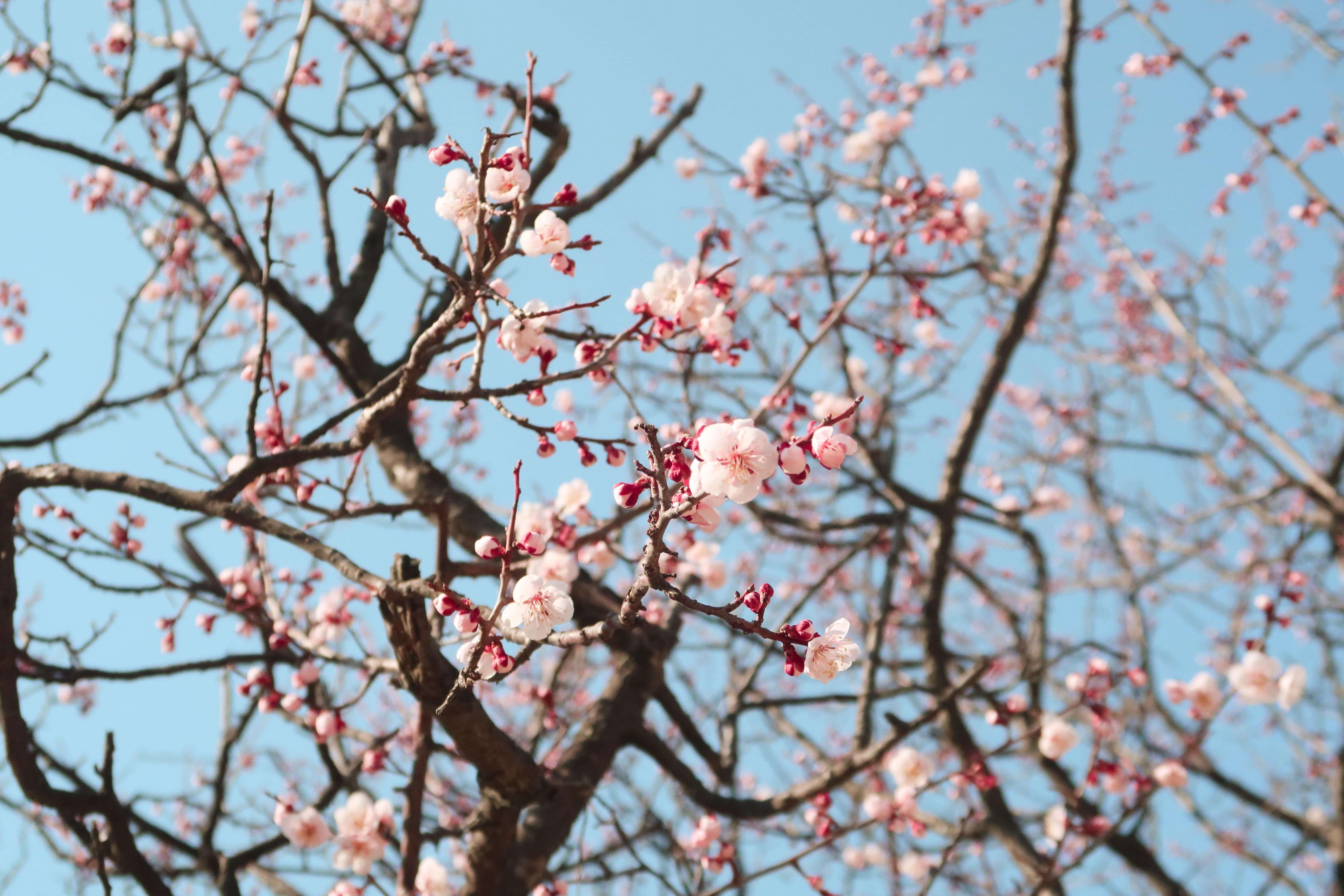[ytmr_falling_flower]
In the fall every year, the sakura tree forms its little green buds, which recede into brown in the winter before emerging again in their full pink glory in the spring.
At the beginning of each year, the Japan Meteorological Corporation and the Japan Meteorological Agency release maps with timelines of the sakura zensen. The sakura zensen is the cherry blossoms front, as the cherry blossom peak moves like a wave from the southernmost tip in Okinawa, working its way up to the northern island of Hokkaido. The buds that blossom each spring are actually developed in the fall of the previous year, but remain closed until they are called out of their winter sleep by the first warm snap in spring. Click here for the JMC early prediction for 2019.
Say the word hibernation, we think of bears in caves, waiting for the snow to melt before venturing out of their slumber in the spring, but hibernation is not simply for the bears! Several different kinds of plants go through dormancy. Dormancy is a period of rest during the winter, where many fruiting trees conserve energy before the ideal sprouting conditions of spring return.
Japan Pocket Wifi Rental
UNLIMTED DATA SIM CARD
Japan Travel Prepaid SIM card
Stone fruit trees, including peaches, nectarines, and cherries, all have a dormant season, as do the Japanese sakura.
The life of a sakura tree, which depending on the species can be surprisingly short, as most trees live between 15 and 20 years. Trees that have been well-maintained of longer-living varieties, however, can literally live thousands of years. The Sandaizakura are the collection of three breathtaking, ancient sakura trees that can be found in different prefectures in Japan. The Sandaizakura include Miharu Takizakura (三春滝桜 ) in Fukishima, which is over 1,000 years old, Gifu Prefecture’s 1,500 year old tree, Usuzumisakura (薄墨桜) and the oldest sakura tree in Japan, Jindaizakura (神代桜) in Yamanashi Prefecture, which has seen over 2,000 years, blossoming for over 2,000 springs.
Miharu Takizakura (三春滝桜 )

Usuzumisakura (薄墨桜)

Jindaizakura (神代桜)

Definitely try to find your way to one of these beauties if you happen to be in Japan during the spring.
WAIT–if sakura in English is translated as cherry blossom… why are there no cherries? If you’ve spent some time in Japan (or in Washington D.C. where the trees gifted by the Japanese government can be found lining the Tidal Basin and near the National Monument) you’ll notice there is no fruit to be found. The cherry blossom is a family of over 300 varieties, and the species of cherry blossom most common in Japan is the somei yoshino 染井吉野, a (mostly) non-fruiting hybrid tree. Sakura can range in color from deep fuchsi- pink to a near purple, but somei yoshino is known for its creamy white blossoms. Blossoms of the somei yoshino grow in large billowy clusters, and when a breeze passes through, they literally dance. When the peak is at its end, even small gusts of wind can send a shower of while petals to the ground.
The short lived peak of the blossoms, which typically last 4-6 days, has symbolized different things at different points in Japanese history. Today, the trees endure as an motif in art and popular culture, symbolizing ephemeral beauty and the subtle yet persistent passing of time.
But you might still be wondering, if the cherry blossom trees have no cherries…where can we find the fruit? In Japanese, cherries are called sakuranbo, さくらんぼ, and while you can find them in most supermarkets, there are a few special regions where the little red fruit is grown.


In fact, sakuranbo’s crimson cousin sold in supermarkets under the name American Cherries are— you guessed it—imported from the United States. Domestically, Yamagata Prefecture is Japan’s most fruitful (haha) and most famous prefecture for sakuranbo production.
As with all fruits cultivated in Japan, you can purchase cherries that are impossibly perfect: uniform in size, shape, and color. Not to mention, they taste great. Such high-grade cherries are often sent as gifts (okurimono, 贈り物) and are marketed for special occasions such as Mother’s Day.

Unfortunately, the cherry blossom season is still a bit early for their fruity friends which will come into season a few months later.
Millions of visitors come to Japan each year, just in the hopes of catching a glimpse of the cherry blossoms in full bloom. Will you be among them in 2019?


GetAround Japan is your number one travel guide, providing the latest information on visiting and living in Japan, with tips on what to eat, things to do, and places to stay.
Whether you’re planning for a trip far in the future, or already in Japan in need of some fresh ideas, our archive of posts will help you find the best way to fill your time and get the most out of your travel experience.
We provide you updates on serious policies that affect visitors and foreign residents while also keeping things light and fun with articles on quirky trends and pop culture.
How do we know how to provide visitors the information they need? Our affiliate company CDJapan Rental provides WIFI and Sim Card rentals to thousands of visitors to Japan every year. In other words, we are constantly in touch with and listening to the voices of our customers, and infuse our blog with the information they ask us for.
For inquiries, contact us here
=Company Information=
CDJapan Rental (Neowing Corporation) 1-10-15-3F Nihonbashi Horidome Chuo, Tokyo 103-0012, Japan
Japan Pocket Wifi Rental
UNLIMTED DATA SIM CARD
Japan Travel Prepaid SIM card




